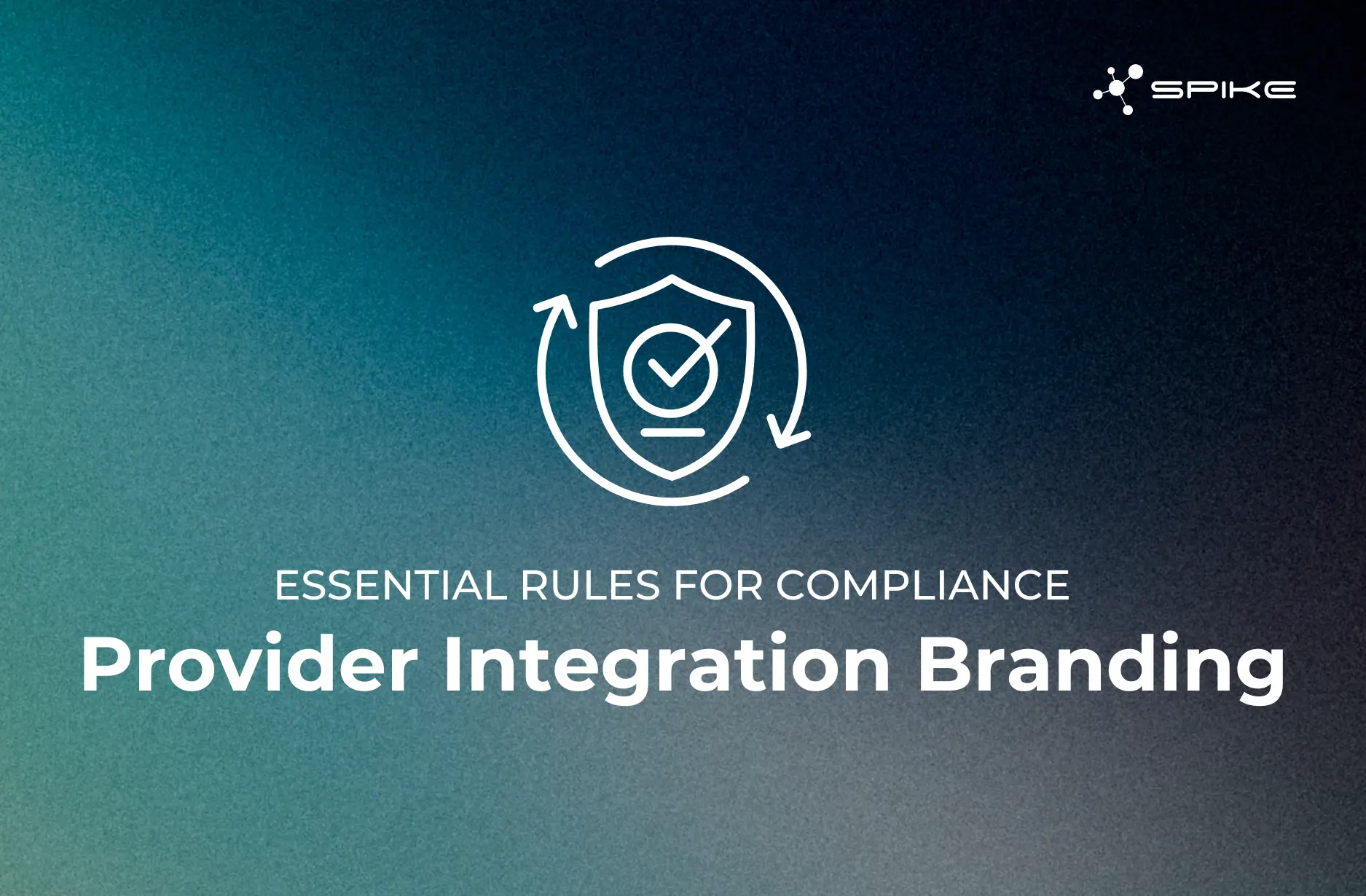Author

Full name
Job title, Company name

Integrating with health data platforms like Garmin, Fitbit, Strava or others can boost your app's value. But each platform has strict branding rules that you need to follow. Get these wrong and you'll face app rejection in app stores or forced updates.
This guide shows you the universal principles for staying compliant across all major health data provider platforms, plus where to find the specific rules for each provider.
Platform providers invest heavily in brand recognition and user trust. Their branding guidelines exist for three key reasons: protecting their reputation, ensuring user security, and maintaining consistent experiences across integrations.
When you follow these rules correctly, you demonstrate professionalism and improve your chances of smooth app approval. When you don't, you risk:
Each platform maintains detailed branding guidelines that change regularly. Here's the key health data providers and their current requirements.
Google Fit is being deprecated in 2026, with Health Connect becoming the core part of the Android Health platform. Health Connect offers comprehensive UI guidelines that emphasize user-centric design and data transparency.
Key requirements:
Apple's approach to HealthKit branding focuses on the "Works with Apple Health" badge system. The Works with Apple Health badge is used to visually communicate your app's compatibility with the Apple Health app on iPhone.
Key requirements:
Strava maintains detailed developer guidelines that emphasize authenticity and proper attribution. The platform is particularly strict about logo usage and partnership implications.
Key requirements:
Fitbit has specific requirements for third-party developers that differ from other platforms. Instead of using the Fitbit logo directly, developers must use official badge systems to indicate compatibility.
Key requirements:
Huawei provides comprehensive branding guidelines through their HMS Core documentation, focusing on proper logo usage and integration standards.
Key requirements:
Garmin's brand guidelines emphasize professional presentation and proper attribution when integrating with their ecosystem.
Key requirements:
Tip: Branding requirements change frequently. Bookmark these docs and check quarterly to avoid surprises.
Based on real developer experiences, these are the most frequent branding violations:
Logo modifications: Changing colors, adding effects, or resizing logos beyond specified parameters.
Partnership implications: Using language that suggests official endorsement or partnership without formal agreements.
Outdated assets: Using old logos or branding elements after platforms have updated their visual identity.
Hierarchy issues: Making platform logos more prominent than your own app branding.
These principles apply regardless of which platforms you're integrating:
Design consistency: Keep your app's branding as the primary focus. Platform logos should support your design, not dominate it. Use consistent button styling across all integrations and implement proper loading states.
Example: Your “Connect with Strava” button should match your app’s style but include the official Strava logo.
Legal compliance: Never imply official partnerships unless you have them. Include proper disclaimers in your privacy policy. Keep your language factual and measured. Use phrases like "Connect with [Platform]" or "Sync with [Platform]" rather than suggesting endorsement.
Logo handling: Always use official assets downloaded directly from platform developer resources. Never modify, rotate, or alter logos. Maintain proper clear space around logos as specified in each platform's guidelines. Ensure logos aren't the largest visual element on your interface.
User experience: Tell users exactly what data you'll share before they connect. Make it easy to disconnect from platforms. Test your integration flows on different devices. Implement proper error handling and loading states for all connections.
Authentication and UI: Follow each platform's specific design language for authentication flows. Use approved button styles and dimensions. Meet accessibility requirements for touch targets and contrast ratios.
Before you launch, verify these items:
Proper branding integration isn't just about avoiding legal trouble. It's about building user trust and showing you're a professional developer who pays attention to details.
Each platform's specific requirements matter, and they change regularly. Bookmark the official guidelines above and check them before every release. Your users will appreciate the seamless, professional experience, and platform providers will view you as a reliable integration partner. When you respect branding requirements, your app ships faster, your users trust it more, and your integrations remain stable.
Whether you’re building a fitness tracker, wellness app, or a clinical dashboard, Spike Wearables & IoT API gives you the foundation you need to scale fast and deliver accurate, reliable user insights.
Schedule a demo and learn how we can make health data in your app richer & more personalized.
You risk app store rejection or removal, legal issues requiring costly fixes, confused users who don't trust your integration, and forced redesigns that delay your launch.
No, you should never modify, rotate, alter colors, or change platform logos in any way. Always use official assets exactly as provided by each platform.
Branding requirements change frequently. You should bookmark official documentation and check quarterly to avoid surprises and ensure compliance.
No, your app's branding should be the primary focus. Platform logos should support your design hierarchy, not dominate it, and should never be the largest visual element.
Use clear, descriptive language explaining exactly what data you'll access and share, and always provide detailed explanations before users grant permissions.
Download fresh assets from official sources, review your legal language and privacy policy, test integration flows with real users, and submit early to allow time for any required branding fixes.